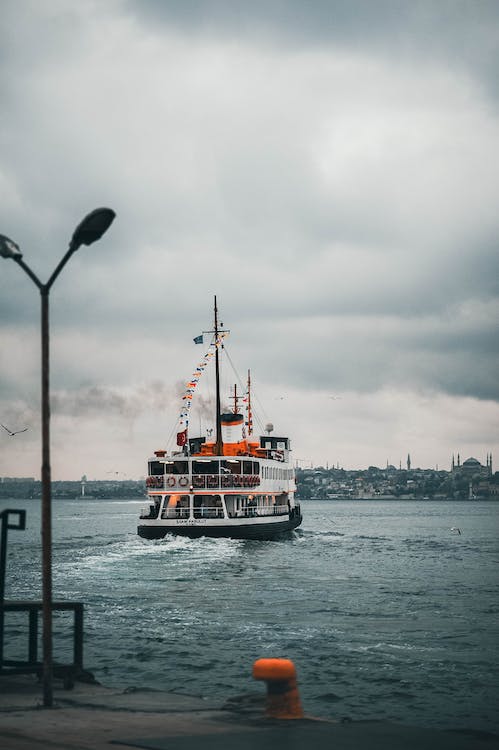Nowadays, many boat owners find solace and relaxation in their boats. They use it to sail, do water sports with, bask in the sun and sea, and sunbathe. Some are even grilling on a boat. A boat is a super casual chilling space. But back then, boats are a luxurious form of transport where the elite gather, wearing their high-class fashion.
One of the most luxurious forms of transport in the 20th century was the steamboat. The last authentic overnight river steamboat in the United States is the Delta Queen. She has spent more than a decade moored in Chattanooga, Tennessee, serving as a hotel, restaurant, and event space. But in 2018, the US Congress approved an exception that the Delta Queen can ply inland waterways again.
History of the Delta Queen
Once upon a time, the Delta Queen had an identical twin – the Delta King. The steam engines, hull, and first two decks were ordered from Dumbarton, Scotland, in 1924. Delta Queen and Delta King were shipped in pieces to Stockton, California, and assembled in a shipyard in 1927.
From there, the California Transportation Company put her into service between San Francisco and Sacramento, and excursions to Stockton and on San Joaquin River. During that time, the two steamboats were the most lavishly appointed and expensive sternwheel passenger boats ever commissioned.
When a new highway linking Sacramento and San Francisco was built in 1940, Delta King and Delta Queen were driven out of service. The Isbrandtsen Steamship Lines bought the two vessels for service out of New Orleans. But during World War II, the United States Navy requisitioned them for duty in San Francisco Bay as the USS Delta Queen. She served as a floating barracks, raining facility, and troop ferry. During the war, the boats were painted gray and were used in transporting the wounded Pearl Harbor victims from ships in San Francisco Bay to area hospitals. The Delta Queen was awarded two medals for that service: the American Campaign Medal and World War II Victory Medal.
Both ships made it through the war, but they were sold to different owners. In 1946, the Delta Queen was purchased by Greene Line of Cincinnati, Ohio, and towed through the Panama Canal and the Mississippi and Ohio Rivers for refurbishment in Pittsburgh.
In 1948, the Delta Queen re-entered passenger service, plying the waters of the Ohio, Mississippi, Tennessee, and Cumberland Rivers between New Orleans, St. Paul, Nashville, Chattanooga, Cincinnati, and ports in between.
Delta Queen started racing against the Belle of Louisville in 1963, as part of the Great Steamboat Race during the Kentucky Derby Festival.
In 1966, Congress passed the Safety of Life at Sea Act that would have put the Delta Queen out of business. However, a series of exceptions kept her plying the Ohio and Mississippi rivers until 2008. The owners of the boat and board members Bill Muster, Richard Simonton, and Edwin “Jay” Quinby traveled to Washington, DC, to defend and save their boat. Congress granted Delta Queen a two-year exception from the law, which was later extended to 1970. Thanks to the efforts of historic preservationist Betty Blake and Delta Queen’s then-president Muster, the Delta Queen was listed on the National Register of Historic Places in 1970.
Subsequently, the Delta Queen was declared a National Historic Landmark in 1989. The National Trust for Historic Preservation named the vessel as “the last remaining authentic link to our country’s 200-year tradition of passenger steamboat transportation.” In 2004, the Delta Queen was inducted into the National Maritime Hall of Fame.
On this note, the interior of Delta Queen remains largely original. Its features include hardwood paneling with brass fittings and Tiffany-style stained glass windows. One unique feature of the Delta Queen is its steam calliope mounted on the Texas deck aft of the pilothouse. It covered about three octaves and was used to play the ship in and out of the berth during docking and undocking. The Delta Queen still has its original system of boilers and engines, though they have been extensively upgraded to keep the boat functional.
Delta Queen’s Current Duty
In April 2006, the Majestic America Line purchased the Delta Queen from the Delaware North Companies, making them her most recent owner before she was forced to retire in service in 2008. Every year during the Kentucky Derby Festival, Delta Queen raced with the Belle of Louisville on Ohio at Louisville.
In August 2007, Majestic America Line announced that the ship would cease operations permanently at the end of the 2008 season because Congress voted to end the temporary exemption from SOLAS granted to the Delta Queen to keep her running. This caused a call to preserve the ship, and devotees of the boat launched a renewed “Save the Delta Queen” campaign similar to the one undertaken in the ‘70s. However, the Delta Queen ceased all service at the end of the 2008 season, and the Majestic America Line announced ending its operations and that all its assets were for sale.
In 2009, the Delta Queen was moored in Tennessee as a floating boutique hotel. Under lease to businessman Harry Phillips, the Delta Queen Hotel was opened for overnight guests, offering dining, lounge, live music, and theatrical performances.
Today, the Delta Queen is owned by Ambassadors International and is leased and operated by All Aboard Travel, a company operating as Delta Queen LLC, which began leasing the boat in 2010.
However, in 2018, Congress reinstated the exemptions that allowed the Delta Queen to offer overnight passenger cruises after the House of Representatives voted to reinstate an exception to allow her to return to service after a decade-long retirement.
The Delta Queen was to be extensively restored, preserving her historic integrity, before starting themed cruises on the Ohio, Tennessee, Mississippi, Arkansans, Cumberland, and Kanawha rivers in 2020.

